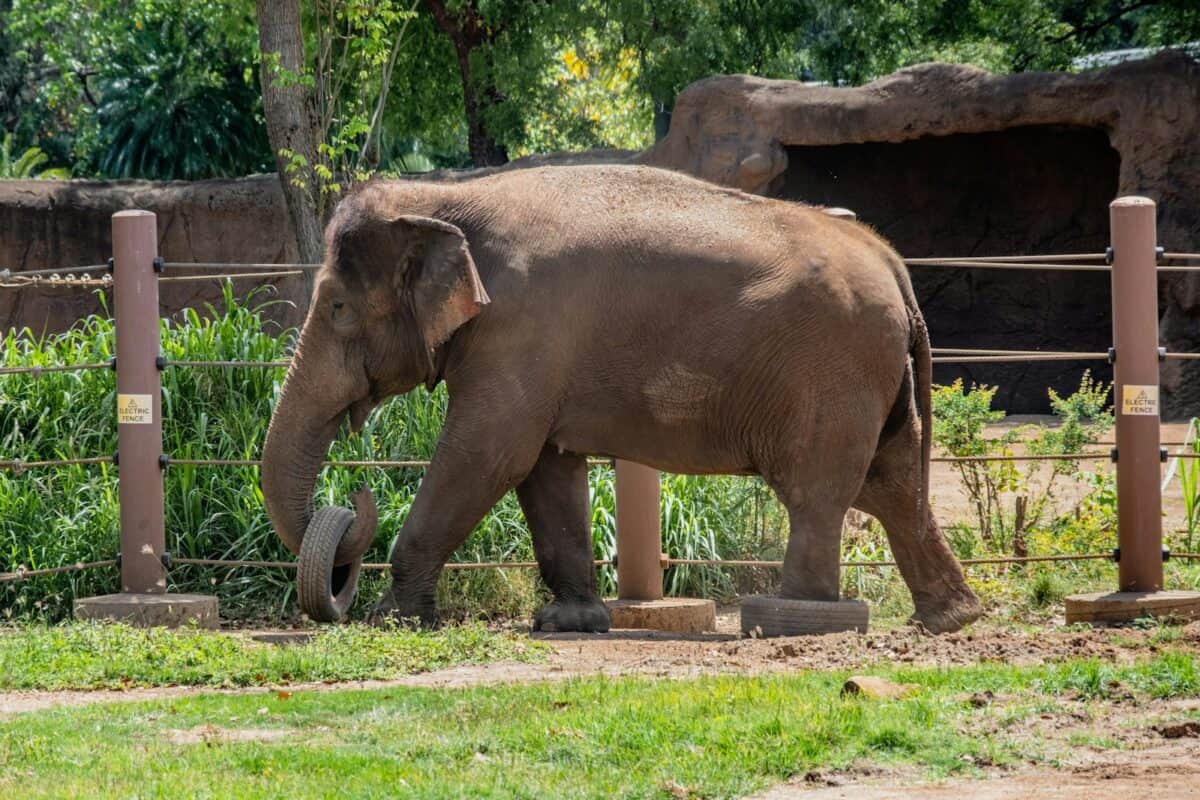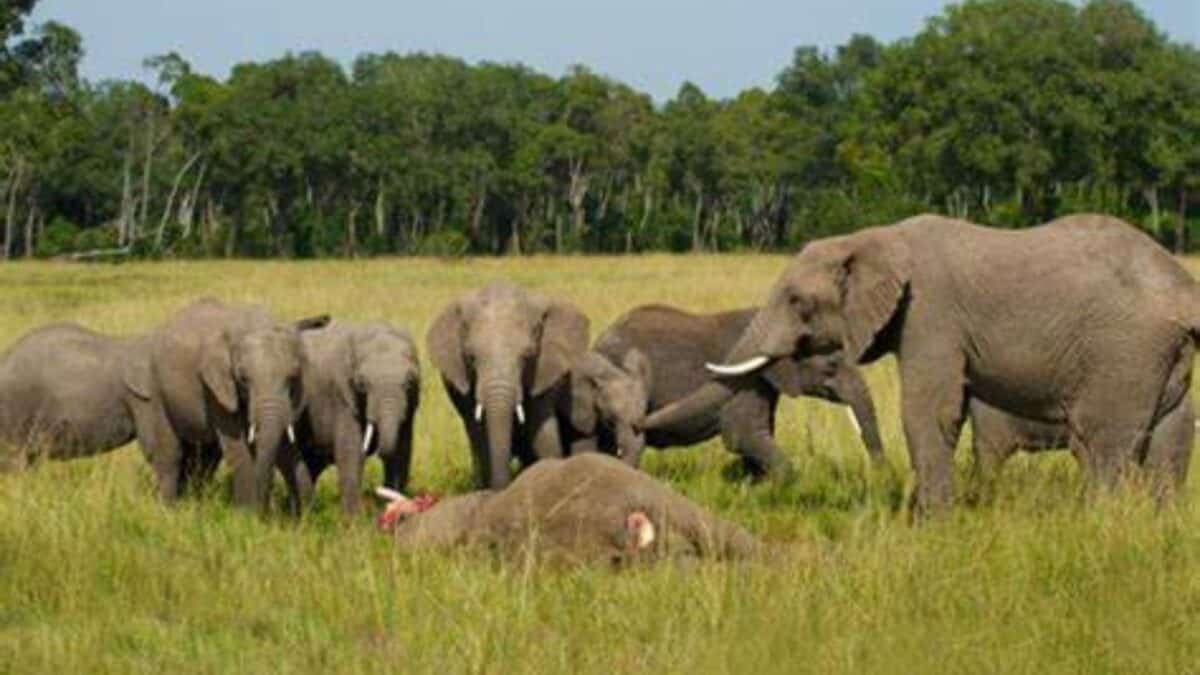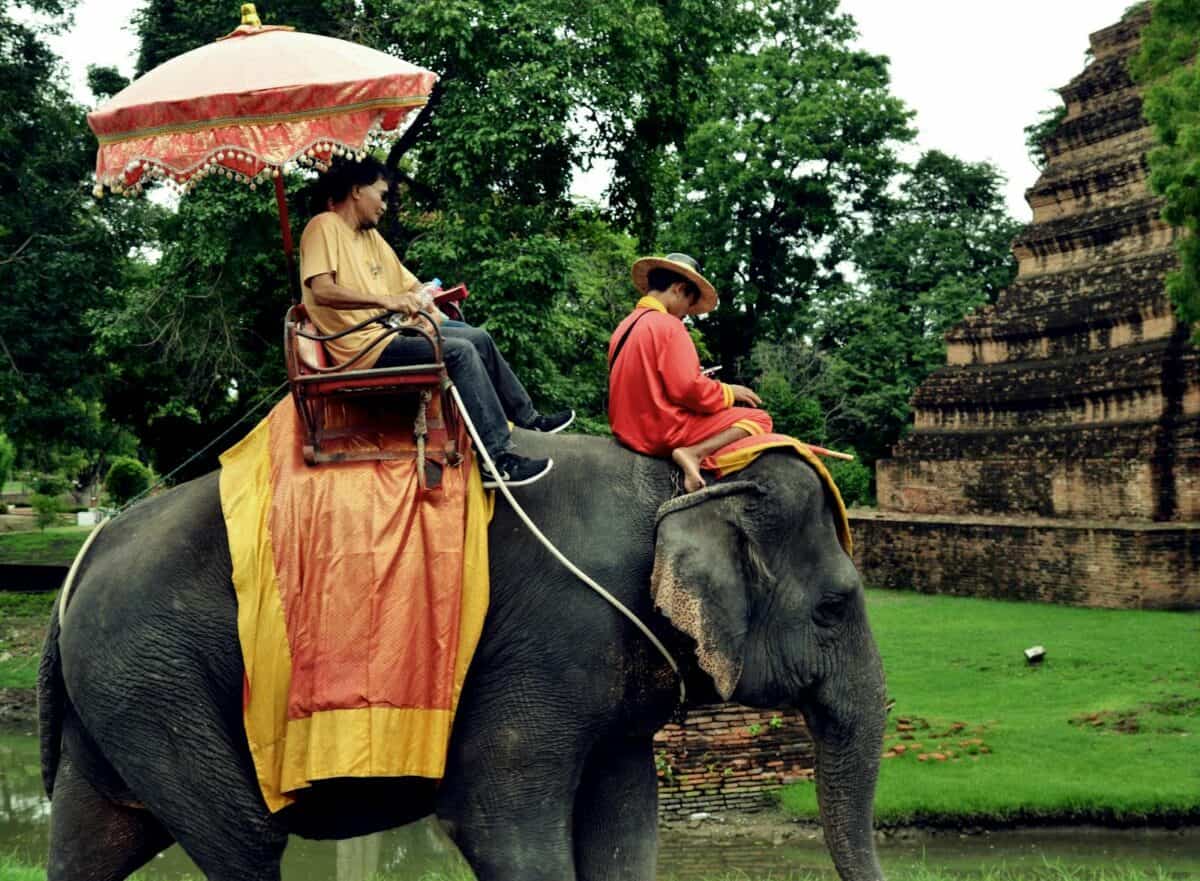Elephants stand as giants not only in physical stature but also in cognitive abilities among the animal kingdom. With the largest brain of any land mammal—weighing up to 11 pounds—these magnificent creatures have consistently demonstrated remarkable intelligence through their problem-solving skills, emotional awareness, and social complexity. Scientists studying elephant cognition have discovered that these animals possess self-awareness, empathy, and memory capabilities that rival many other species, including some primates. In this article, we’ll explore 15 fascinating examples of elephant intelligence that showcase why these gentle giants are considered among the smartest animals on our planet.
Creating and Using Tools

Among the most impressive displays of elephant intelligence is their ability to create and use tools—a trait once thought to be exclusively human. Researchers have observed elephants in Thailand breaking branches into the perfect shape for swatting insects or scratching hard-to-reach parts of their bodies. In particularly remarkable cases, elephants have been documented modifying branches by stripping them of leaves and bark to create fly switches with optimal functionality. At the Nagarhole National Park in India, an elephant was even observed using a stick to dislodge an electric fence, showing not just tool use but an understanding of cause and effect in dealing with human-made obstacles.
Extraordinary Memory Capabilities

The saying “an elephant never forgets” has strong scientific backing. Elephants can remember migration routes spanning hundreds of miles, locations of seasonal water sources, and recognize specific humans or elephants they haven’t seen for decades. In one documented case at Amboseli National Park in Kenya, elephants remembered the scent of a researcher who had worked with them briefly 12 years earlier, greeting her with obvious enthusiasm upon her return. Their spatial memory is so precise that during droughts, matriarchs (elder female herd leaders) can guide their families to water sources they may have visited only once, 50 years earlier—a cognitive feat that demonstrates both exceptional memory and the ability to apply stored knowledge to current survival needs.
Self-Awareness and Mirror Recognition

Elephants belong to an elite group of animals that can recognize themselves in mirrors—a critical test of self-awareness that most species fail. In controlled experiments conducted at the Bronx Zoo, elephants displayed behaviors indicating self-recognition, including using their trunks to touch marks placed on their heads that were only visible in the mirror. This understanding of self represents a sophisticated level of cognition previously observed only in great apes, dolphins, and magpies. What makes this ability particularly remarkable is that it suggests elephants maintain an internal model of themselves as distinct individuals, a foundation for higher-order thinking and potentially even consciousness as we understand it.
Complex Social Structures and Cooperation

Elephant herds operate with intricate social structures that require sophisticated communication and coordination. Researchers have documented elephants working together to move heavy objects, with one elephant pushing while another pulls or lifts—showing both role assignment and coordination. In controlled experiments at the Thai Elephant Conservation Center, elephants demonstrated they understand when cooperation is necessary to obtain food rewards placed on a platform that could only be retrieved if two elephants pulled different ends of a rope simultaneously. Even more impressively, if one elephant saw its partner couldn’t reach the rope, it would wait—showing an understanding of the partner’s role and perspective, a cognitive ability called “theory of mind” that few animals possess.
Mourning and Death Rituals

Perhaps one of the most emotionally stirring displays of elephant intelligence is their response to death. Elephants have been observed performing what can only be described as mourning rituals—standing quietly over deceased herd members, gently touching the bones with their trunks, and sometimes covering the bodies with branches and dirt. They show particular interest in elephant skulls and tusks compared to other animal remains, suggesting they recognize the significance of their own species’ deaths. In Kenya’s Samburu National Reserve, elephants from multiple family groups traveled significant distances to visit the body of a deceased matriarch, standing vigil for days—behavior that suggests not only emotional processing but a concept of death itself and social bonds that transcend immediate family groups.
Advanced Communication Networks

Elephants communicate through a sophisticated system that extends far beyond what humans can hear. Using infrasonic rumbles below the range of human hearing, elephants can communicate over distances of up to six miles. These low-frequency communications contain specific information about identity, reproductive status, danger, and food sources. Research at Amboseli National Park revealed that elephants can distinguish between human languages, identifying those spoken by tribes that might pose a threat versus those who don’t hunt elephants. Additionally, they can differentiate between age and gender in human voices, responding more cautiously to adult male voices of potentially dangerous groups—showing not just communication skills but nuanced threat assessment capabilities.
Problem-Solving in Novel Situations

When faced with challenges they’ve never encountered before, elephants show remarkable problem-solving abilities. At the Washington Park Zoo, an elephant named Chendra figured out how to disable an electric fence by throwing rocks at the wires to short-circuit it. In another example from Zimbabwe, elephants encountered locked water pumps during a drought and quickly learned to operate the handles with their trunks to access water. Perhaps most impressively, captive elephants have been observed stacking blocks or even standing on objects to reach food placed out of reach—showing not just persistence but the ability to envision and execute multi-step solutions, a hallmark of advanced cognition.
Mathematical Abilities

Research indicates that elephants possess rudimentary numerical abilities that allow them to differentiate between quantities. In a study conducted at the Ueno Zoo in Tokyo, an Asian elephant named Ashya consistently chose buckets containing more apples when presented with two options, even when the differences were subtle (like 6 versus 7 apples). In the wild, this ability likely helps matriarchs keep track of their herd members—they seem to notice when even a single member is missing from groups of 30 or more individuals. This suggests elephants maintain a mental register of their social group and can perform quick “censuses” that require some form of counting or quantity assessment, an ability that directly contributes to the cohesion and safety of their complex social units.
Empathy and Helping Behavior

Elephants routinely demonstrate empathy toward both their own kind and other species. Field researchers have documented elephants helping injured or stuck herd members, sometimes even attempting to lift fallen elephants using their tusks and trunks in coordinated efforts. In Thailand, an elephant was observed comforting a distressed fellow elephant by placing her trunk in the other’s mouth—a known elephant gesture of reassurance. Perhaps most remarkably, at an elephant sanctuary in Tennessee, an elephant named Tarra formed a friendship with a dog named Bella. When Bella was injured and couldn’t walk, Tarra stayed by her side for three weeks, only leaving to eat quickly before returning—showing cross-species compassion and loyalty that suggests deep emotional intelligence.
Cultural Learning and Tradition

Like humans, elephants develop cultural knowledge that passes down through generations. Different elephant populations have distinct “traditions” including specific migration routes, food preparation techniques, and greeting ceremonies. In Amboseli National Park, researchers observed a tradition where elephants pick up and play with bones specifically at certain locations that have been used for this purpose across generations. In captivity, elephants learn behaviors from each other rather than just from humans, with older elephants teaching younger ones how to respond to keeper commands even without human reinforcement. This cultural transmission of knowledge indicates not just learning ability but also teaching intent—a sophisticated cognitive trait seen in very few animal species.
Artistic Expression

In a surprising display of creative intelligence, some elephants in captivity have learned to paint representational images. The Thai Elephant Conservation Center features elephants who create recognizable paintings of flowers, trees, and even elephant figures. While critics note that these behaviors are trained, the elephants show individuality in their work, with some developing distinctive styles. The ability to transfer a three-dimensional concept to a two-dimensional representation requires sophisticated visual processing and fine motor control. More importantly, some elephants engage in spontaneous drawing behaviors when given the opportunity, creating patterns in sand or dirt with sticks or their trunks without human direction, suggesting an intrinsic motivation to create that may parallel early human artistic expression.
Adapting to Human Encroachment

As human development increasingly intrudes on elephant habitats, these intelligent animals have developed sophisticated strategies to navigate human-dominated landscapes. In parts of Africa and Asia, elephants have learned to travel primarily at night when passing through dangerous areas, effectively avoiding human conflict. In crop-raiding situations, researchers documented elephants sending younger males as “scouts” before the herd follows—suggesting strategic planning and risk assessment. Most impressively, elephants in Kenya have been observed avoiding areas where members of their herd were previously killed by poachers, even altering migration routes that had been used for generations. This demonstrates not just memory but the ability to adapt behavior based on learned dangers—a survival intelligence that helps them navigate our increasingly shared world.
Understanding of Language and Gestures

Captive elephants have demonstrated remarkable abilities to understand human language and gestures. Elephants at several wildlife sanctuaries respond to over 100 verbal commands without visual cues, showing language comprehension comparable to domesticated working animals like horses and dogs, despite having no evolutionary history of working with humans. At the Elephant Sanctuary in Tennessee, elephants have been observed responding appropriately to spoken sentences they’ve never heard before but contain familiar words in new combinations, suggesting they understand not just individual words but basic sentence structure. They also readily interpret pointing gestures—a skill even chimpanzees struggle with—indicating they can understand human communicative intent and shared attention, cognitive abilities that form the foundation of language in humans.
Inventive Problem-Solving

Elephants frequently demonstrate creative approaches to challenges that showcase their innovative thinking. At the National Zoo in Washington D.C., an elephant named Kandula figured out how to position a cube, stand on it, and use a stick to reach fruit hanging overhead—a combination of tools that researchers hadn’t demonstrated. In the wild, elephants in Mozambique’s Gorongosa National Park developed a startling innovation to avoid poachers: a significant percentage of female elephants stopped growing tusks entirely, a genetic adaptation that appeared in just one generation in response to ivory poaching pressure. While this represents evolutionary selection rather than conscious choice, it demonstrates how intelligent species can rapidly adapt to threats. In dry regions of Namibia, elephants have been documented digging wells up to three feet deep, creating precise holes that tap into underground water sources—engineering skills that benefit not just elephants but entire ecosystems.
The remarkable cognitive abilities of elephants offer profound insights about intelligence beyond our own species. Their high-functioning social cognition, despite having brain structures quite different from primates, suggests that intelligence has evolved through multiple pathways in the animal kingdom. This understanding challenges our human-centric view of intelligence and raises important ethical questions about how we treat these sentient beings. Conservation efforts become not just about preserving biodiversity but about protecting a unique form of non-human intelligence that, once lost, cannot be recovered. Perhaps most importantly, elephant intelligence reminds us that consciousness and complex thinking exist in forms we are only beginning to understand, encouraging both scientific curiosity and humility about our place in the cognitive landscape of Earth’s remarkable species.
- 15 Times Elephants Proved Just How Smart They Are - August 11, 2025
- 10 Most Venomous Snakes in North America - August 11, 2025
- 15 Fascinating Ways Cats Adapt to Seasonal Changes - August 11, 2025

